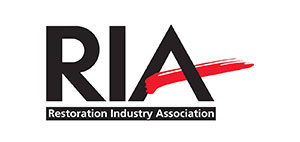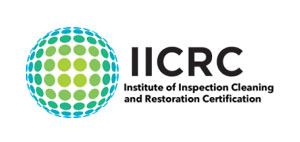Did you know that nearly 14,000 people in the United States face a water damage emergency every day? These incidents, from small leaks to big floods, can cause a lot of damage and risk. It’s important for homeowners to know how to fix water damage to protect their homes and keep everyone safe.
Fixing water damage involves several important steps. First, you need to find and stop the water from coming in. After that, you must dry out the affected areas to stop mold and mildew from growing. This means removing or replacing things like drywall, flooring, and ceiling parts.
Using special tools, like moisture meters, helps make sure everything is dry, even in hidden spots. After fixing the damage, keeping your home clean is key to avoiding more water damage and mold problems.
Key Takeaways
- The United States sees an average of 14,000 water damage emergencies daily.
- Effective water damage restoration starts with identifying and stopping the source of water intrusion.
- Drying out affected areas thoroughly is vital for mold prevention.
- Specialized equipment like moisture meters may be necessary for confirming the dryness of the area.
- Post-repair cleanliness helps prevent future water damage and mold outbreaks.
Understanding the Types of Water Damage
Water damage in a home can come from different sources, each with its own category. The Institute of Inspection, Cleaning, and Restoration Certification (IICRC) has set these categories. Knowing them helps in responding quickly and effectively.
- Category 1: Clean Water Damage
Category 1, or “clean water damage,” comes from sources like broken water lines or overflowing sinks. It’s safe for humans and the least concerning type. Yet, it’s important to act fast and clean up well to stop mold from growing.
- Category 2: Gray Water Contaminants
Category 2, or “gray water contaminants,” has a lot of pollutants. It comes from things like dishwashers, washing machines, and sump pumps failing. Being around gray water can make you feel sick or uncomfortable. So, it’s important to be careful and clean properly.
- Category 3: Black Water Hazards
Category 3, or “black water hazards,” is very dangerous. It’s water filled with harmful germs or toxins. This can come from sewage backups, flooding from rivers, or dirty water. Because of the health risks, cleaning up black water needs to be done carefully and thoroughly.
It’s key for homeowners and cleanup experts to know these categories. Each one needs a different way to fix it, with the risk getting higher from clean to black water. Acting fast and right can lessen the damage and help fix things well.
Initial Steps to Take After Water Damage
Act fast when dealing with water damage to lessen its effects. Start by finding and stopping the water source quickly. This step is crucial to stop more damage.
Then, make sure everyone’s safety is a top priority. If water might touch electrical systems, turn off the power right away. This helps avoid electrical shocks or fires. Check that all people and pets are safe before you do anything else.
- Perform water source identification to stop the water at its origin.
- Implement safety precautions by disabling power in affected areas.
After making sure everyone is safe, call your insurance company. Starting the insurance claim process early helps document the damage. It also gets you advice on fixing and drying out the area.
Start to lessen damage right away. Remove water and keep important items away from more damage. Drying out areas quickly stops mold and other harmful stuff from growing.
- Reach out to your insurance provider to begin the insurance claim process.
- Remove standing water swiftly and safely.
- Protect and relocate valuables to undamaged areas.
- Start drying out the affected areas to prevent mold growth.
Following these emergency water damage steps carefully helps reduce risks and makes fixing things easier.
Mitigation Process Explained
Water damage mitigation is key to stopping the damage from getting worse. Here are the steps:
- Inspection: First, experts check how bad the water damage is. They figure out the extent and type of water involved.
- Water Removal: Special tools are used to remove standing water. This action stops more soaking and damage to the structure.
- Drying: Using structural drying methods is vital. High-powered fans and dehumidifiers are used to dry the area completely.
- Assessment of Structural Stability: Experts check if the building is still safe. They remove damaged parts like drywall and flooring to reduce damage.
- Securing the Area: If needed, areas are covered with tarps or boarded up. This prevents more damage and helps prevent future issues.
This initial phase is crucial. It stops water from flowing and prepares the property for repairs. The cost of water damage mitigation can vary a lot. This depends on how extensive and severe the damage is. Black water damage usually costs more because it requires extra safety measures.
Remediation and Dealing with Contaminants
Remediation is about cleaning and sanitizing areas after water damage. It means getting rid of items that can’t be fixed and saving those that can. Remediation and mitigation sometimes blend together. Actions taken can help with both cleaning and fixing damage.
During remediation, things like drywall mold and buckled flooring are fixed. This stops further damage. Getting rid of contaminants makes sure the home is safe to live in.
Here are the main steps in remediation:
- Contaminant Removal: All items touched by water are taken out to stop health risks. This includes wet carpet and drywall.
- Deodorizing and Sanitizing: Special cleaners are used to get rid of smells and kill bacteria or viruses in the area.
- Mold Prevention Strategies: Places where mold might grow, like damp walls and floors, are treated. Mold inhibitors are applied to stop mold from coming back.
Following these steps makes sure the home is safe and comfortable again. It also keeps it protected from future contaminants.
Detailed Guide on How to Repair Water Damage in a Home
Fixing water damage needs a step-by-step approach. First, stop the water from coming in and check for damage. Make sure to turn off electricity in the affected areas to avoid dangers. After safety is ensured, start the drying process.
- Initial Assessment and Moisture Testing: Conduct a detailed check, find all damaged spots, and use moisture tests to see how deep the water went.
- Drying and Dehumidification: Use special tools like dehumidifiers and fans to dry the area well.
- Removing Damaged Materials: Take out and throw away materials that are too damaged, like drywall, insulation, and carpeting.
- Structural Repairs: If the damage is severe, you might need to fix the structure. This could mean replacing damaged wood or drywall and making the structure stronger.
- Surface Preparation: Get surfaces ready for fixing by sanding, sealing, and using treatments to stop mold from growing.
- Restorative Work: Do the fixing work, like painting or replacing flooring or cabinets, to make things as good as new.
The cost of fixing water damage depends on how much damage there is and what materials you need. Some fixes might be simple and cheap, but others could need big repairs or even renovations. Every step in fixing water damage is important for safety and getting your home back to normal.
Post-Repair Cleaning and Sanitizing
After fixing water damage, the next step is cleaning and sanitizing. This makes sure the affected areas are safe and ready for living.
- Carpets and Upholstery: It’s key to deep clean carpets, rugs, and upholstery. Use the right cleaners to get rid of moisture and stuff that could cause mold.
- Structural Components: Check new drywall and flooring for dryness. Any wet spots can lead to mold, making your home not safe after flooding.
- Mold Prevention: A strong dehumidifier helps keep areas dry. This is crucial to stop mold from growing.
The kind of water that caused the damage affects how you clean afterwards:
- Clean Water: For clean water damage, regular cleaning products work well. Make sure to clean all affected areas to keep your home safe.
- Contaminated Water: If the water was dirty, like from sewage, you should get professional help. These experts use special tools and cleaners to clean and disinfect well.
Cleaning water-damaged areas well is crucial. Fixing the water damage is important, but cleaning afterwards is key to making your home healthy again.
Preventive Measures to Avoid Future Water Damage
Water damage prevention starts with a strong home foundation. It’s key to fix foundation issues early to avoid bigger problems. Regular checks and maintenance help catch small issues before they grow.
Improving drainage around your home is another smart step. Good drainage keeps water away from the foundation, lowering damage risks. Homeowners should check appliances and plumbing often for leaks or weak spots.
Upgrading older homes with new materials and tech helps them fight water damage better. This might mean adding sump pumps or backflow valves. It’s also crucial to make sure new installations work right to prevent water damage.
Homeowners should weigh the cost of fixing versus replacing when planning prevention. Being proactive with water damage prevention keeps your home safe and stable. This gives you peace of mind for many years.
Conclusion
Fixing water damage in a home is complex and needs quick, effective steps. It starts with understanding the damage types and moves to the repair stages. Each step is key to fixing the damage and removing harmful substances.
It’s wise to use professional services at Lyon Restoration. They bring the needed skills for cleaning, fixing, and restoring your home. Taking quick action and working with experts can greatly improve the repair results.
To keep your home safe long-term, take steps to prevent water damage. Make structural changes and keep up with maintenance. This way, you not only fix the damage but also keep your home healthy. It shows how important it is to be careful and get help from professionals to keep your home safe.





